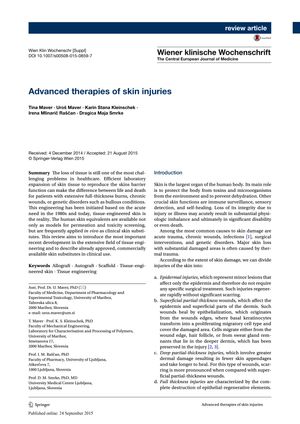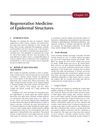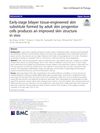Advanced Therapies for Skin Injuries
September 2015
in “
Wiener Klinische Wochenschrift
”
tissue-engineered skin substitutes full-thickness burns chronic wounds genetic disorders wound healing skin grafting autografts allografts xenografts epidermal substitutes dermal substitutes dermo-epidermal substitutes keratinocytes cultured epithelial autograft sheets sub-confluent keratinocytes keratinocyte suspensions delivery membranes dermal reconstruction

TLDR New skin substitutes for treating severe burns and chronic wounds are being developed, but a permanent solution for deep wounds is not yet available commercially.
The document reviews advancements in tissue engineering for skin injuries, particularly the development of tissue-engineered skin substitutes for treating extensive full-thickness burns, chronic wounds, and genetic disorders. It discusses various wound healing approaches and skin grafting techniques, including autografts, allografts, and xenografts, and their limitations. The focus is on creating safe, effective, non-toxic, and non-immunogenic skin substitutes that are convenient to handle and apply. The review categorizes skin substitutes available in the European Union into epidermal, dermal, and dermo-epidermal types, and details the process of isolating keratinocytes for epidermal substitutes. It concludes by examining the advantages and disadvantages of cultured epithelial autograft sheets and sub-confluent keratinocytes. The document also discusses the effectiveness of keratinocyte suspensions, delivery membranes, and the role of dermal substitutes in full-thickness wound healing, mentioning various materials used for dermal reconstruction. It notes that while dermo-epidermal substitutes are advanced, no true bilayered skin substitute for permanent deep wound closure is commercially available yet. Specific study data or outcomes are not provided in the summary.




